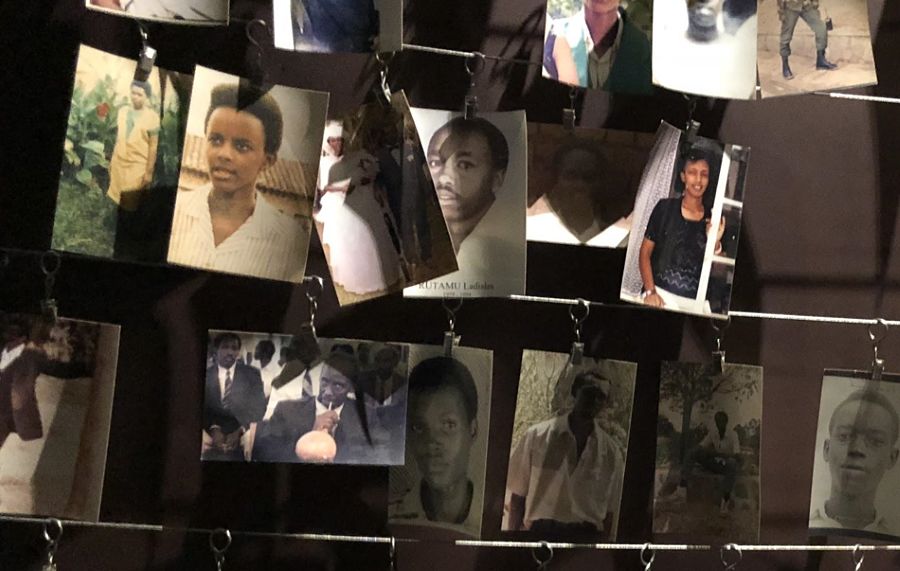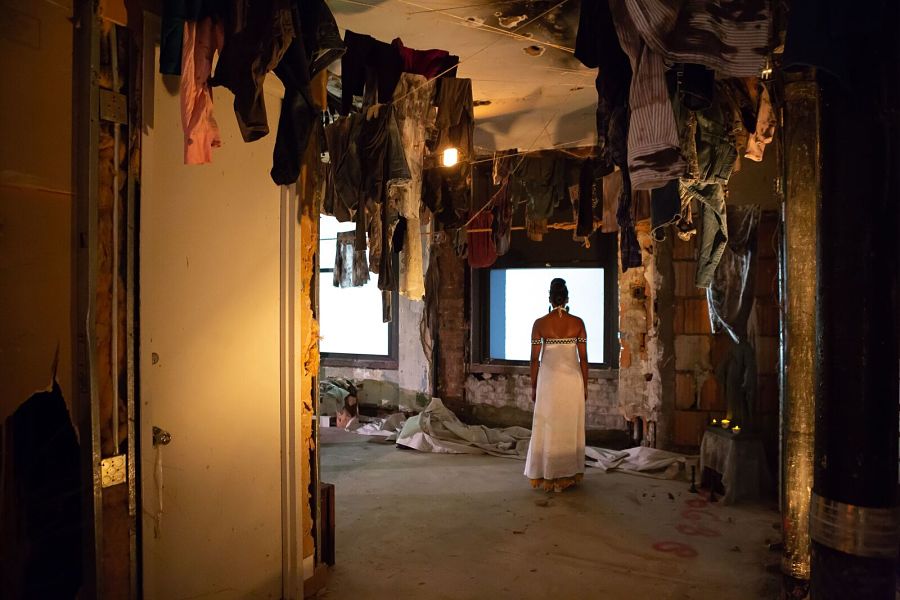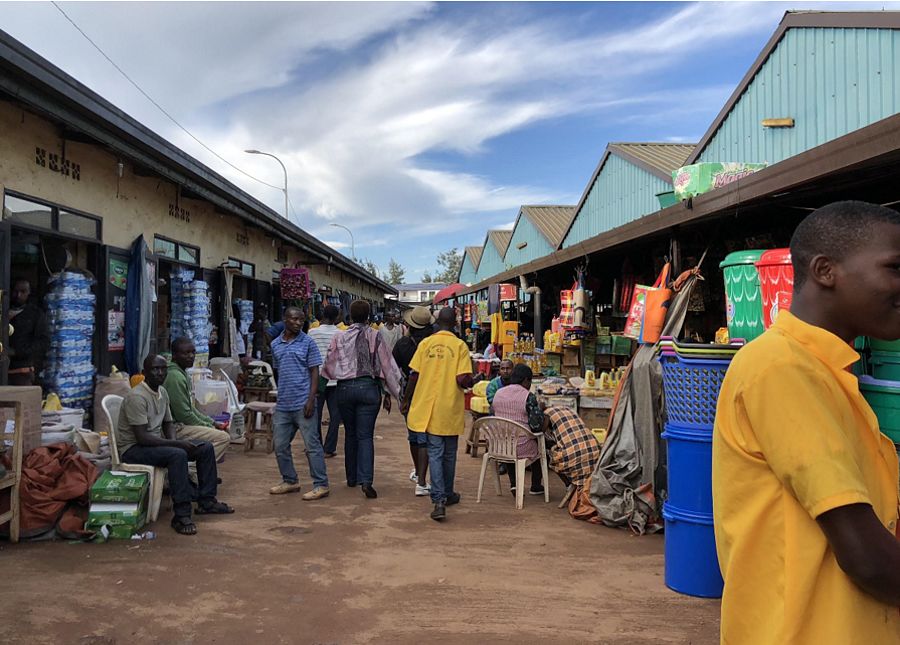A few years ago I was having lunch with a prominent arts funder in New York City about a project my company was working on, set in Rwanda during the 1994 genocide, and he told me, “You need to go meet the people there and understand what happened from their perspective.”
My first thought: But the artists have already been there! My company, En Garde Arts, had commissioned Red Hills, co-written by Ugandan playwright Asiimwe Deborah Kawe and Sean Christopher Lewis, an American who had taught in Rwanda; Katie Pearl, the director, had also traveled to Rwanda. (The show premieres this week in a site-specific space near Wall Street and runs through July 1.) Did I, the show’s producer, need to go to Rwanda too? Upon further reflection, I realized it was essential for me to have firsthand knowledge of the country we’d be portraying onstage. I probably should have realized this six months before I did, or perhaps even earlier. But it’s never to late to learn and to course-correct, and I’m extremely glad I did.
15 emails later and I was on a 17-hour flight to Kigali, Rwanda, with an immensely supportive husband who wanted to accompany me, a fully flushed-out itinerary created by our guide named Simon (a choreographer and dancer and member of Ubumuntu International Festival), appointments with leading artists in the country, plans to visit several genocide memorials, and ideas for how to portray Rwanda today. I met with half a dozen fashion designers, who each gave me objects which represent their style; we will be featuring these in the reception area of our show.
I didn’t realize how deeply meaningful this trip would be for me, or how opportune it was to visit during the country’s 100 days of remembering, as I did. Rwanda touched my soul. I want to go back and be a part of exchanging work with Rwanda and Uganda.
Rwanda is a country in recovery, a civil society that suffered one of the worst acts of genocide in modern history. It is a society defined by Tutsi and Hutu, survivors and perpetrators, families destroyed and remade by war, orphans adopted by survivors who took in other survivors, young children left without parents who took care of their even younger siblings.
City streets are packed with mopeds, open-air storefronts, and busy commuters. They are bustling with life and warmth, yet the presence of a violent past is never far away. Armed guards perform searches at the entrance to every hotel and office building, yet to the outside eye, Kigali does not feel either violent or unsafe. Paul Kagame, Rwanda’s president, has employed a massive police force, their rifles hanging off their chests as if to say, “Don’t ever forget who is in charge.” And perhaps there is also the acknowledgement that its democracy is fragile and a violent uprising could happen at any time.
Each April begins 100 days of remembering, the same length as the genocide in 1994. Signs saying “Kwibuka 24, Remember, Unite and Renew” hang on every major building around Kigali for this period. But the remembrance is there year round at the Kigali Genocide Memorial, where an exhibit chronicles the history of Rwandan colonialism by the Belgians, who represented the Tutsi as an alien race. It is widely believed that Belgian colonialism is fundamentally responsible for the ethnic cleansing and genocide against the Tutsis, though it was carried out by Hutus. There are pictures showing the senseless killing of women, children, and whole families who were obliterated. Torn clothes hang in some rooms, skulls in glass cases in others. There are comparisons to the Holocaust.

Some distance away, at the Murambi Genocide Memorial Centre, the site of the technical school where 45,000 people were murdered, skeletons are laid out on beds where you could literally reach out and touch them. Not behind any cases. There, up close. Nyamata, another well-known memorial, has a staircase down into a room of coffins where multiple bodies are buried in each box. Everywhere there are peace baskets filled with flowers with family names on them. At all the memorials, busloads of students are lined up to get into the exhibits, survivors sit quietly, and peace baskets fill with flowers with the names of families on them.
Contrasted with the darkness and pain so evident here, there is an amazing vitality and warmth among the people here. And there are extraordinary individuals doing work to rebuild and redefine the country. Kiki Katese, a Rwandan artist, director, and playwright, founded Ingoma Nshya, an all-female drumming troupe based in Butare; it’s the first of its kind in a country where drumming was previously reserved for men. Katese also started an ice cream store that became a collective.to support the business. While this might not seem remarkable at first glance, it was in fact the first ice cream store in Rwanda, begun in conjunction with two American women who have an ice cream shop in Brooklyn called Blue Marble Ice Cream. Katese’s ice cream store created jobs for women who couldn’t find work, some of whom had lost their entire families. While we there, a concert was performed in front of the ice cream shop just for us. Beyond being touched at this gesture, I was incredibly impressed by their talent. One young woman with dreads the color of the rainbow flying off her head danced with so much energy she looked as though she could power the town.
Katese exudes strength, independence and grace. She joins the amazing Hope Azeda, who runs the Ubumuntu International Festival, which runs with free admission in Kigali every summer, and Carole Karemera, an actress, director, sax player, and contemporary dancer who is the director of the IIshyo Arts Center. These two extraordinary women, who are leading the cultural scene there, both want to bring the En Garde Arts’s production of Red Hills to Rwanda, and in turn tour their work to the United States.
Another extraordinary person I met was a man named Sunday Nzita, who runs a nonprofit organization called Bridge of Hope. As I was walking down the street, music emanating from his backyard drew me in. There I saw 20 teenagers learning African dance. Three times a week Nzita provides dancing lessons to teenagers who have nowhere to go after school. Most of their fathers were killed in the war and their mothers are working full time. His organization has a whole host of programs dedicated to promoting the socio-economic wellbeing of disadvantaged and vulnerable children and young women, empowering them to adjust into mainstream society. If that weren’t enough to occupy a soul, he designs clothes, the money from which goes towards Bridge of Hope. He also happens to have a full-time job working for Study Abroad Rwanda: Post Genocide Restoration and Peace Building. Nzita has stepped up in part because there is no government support for things like after-school programs for teens. I was told that the government had many more pressing things to take care of, like making sure people have enough to eat and that people who need them. Nzita himself was raised in an orphanage.
Perhaps the most fascinating conversation I had was on the last day with a sociologist named Hyppolite and our guide Simon, who spoke about the concept of forgiveness. They admitted that while forgiveness was the goal of the Rwandan people, it would never be wholly possible. Tutsis and Hutus no longer overtly refer to one another as such, but they never or rarely intermarry. Many young Hutu children struggle with parents who committed acts of atrocity; many Hutu families are filled with remorse and guilt for the crimes their members committed. Hutus imprisoned after the war are now getting out, and even if their families have moved on, they may have not. Then there are genocide deniers, who would like to spread the false narrative that Tutsis murdered Hutus as well (some participated in retaliatory killing, but not nearly to the same extent).

Still, there is the understanding that forgiveness is the only way forward, but it will not be an easy road. Hyppolite doesn’t know where his father is buried and Simon was orphaned at age 12. When I asked Hyppolite and Simon if they ever worried it could all happen again, they both shook their heads and said, “Of course”.
I set out to Rwanda to learn more about the culture at the center of our play. I returned to the U.S. having been inspired and moved by visionary artists, gifted designers, and courageous social change workers. I learned about a society in transition and recovery, and marveled at the generosity of human spirit there, perhaps arising out of the fact that great tragedy can give us perspective.
Red Hills tells the story of an American missionary and a Rwandan Tutsi who meet in a chance encounter during the genocide, then reconnect 20 years later, and recall the history they witnessed from vastly different perspectives. It calls into question the rightful ownership of storytelling and the concept of the possibility of true forgiveness in a world after war.
I returned from Rwanda changed, and ready to help tell that story. We all need to make the lessons of history our story, but we need to make sure we’ve done the research, gained the knowledge, and forged the connections to get it right.
Anne Hamburger is the founder and artistic director of En Garde Arts.


